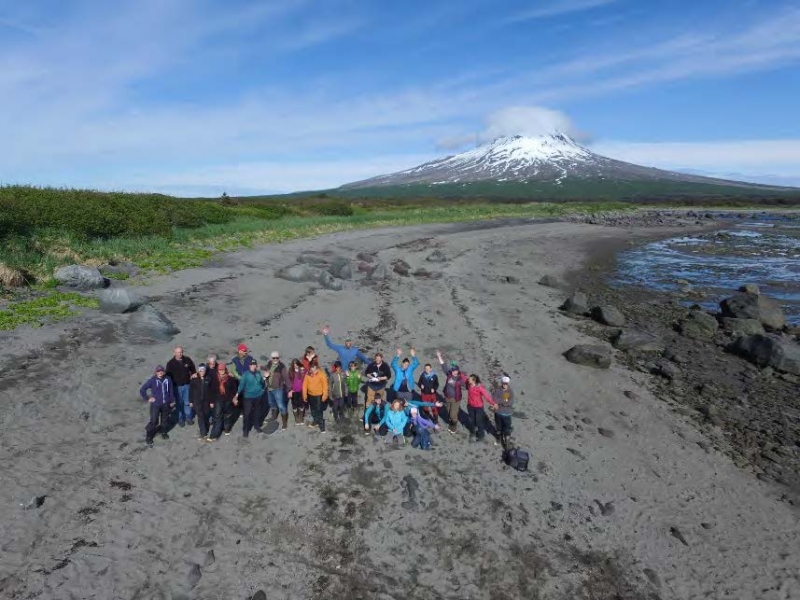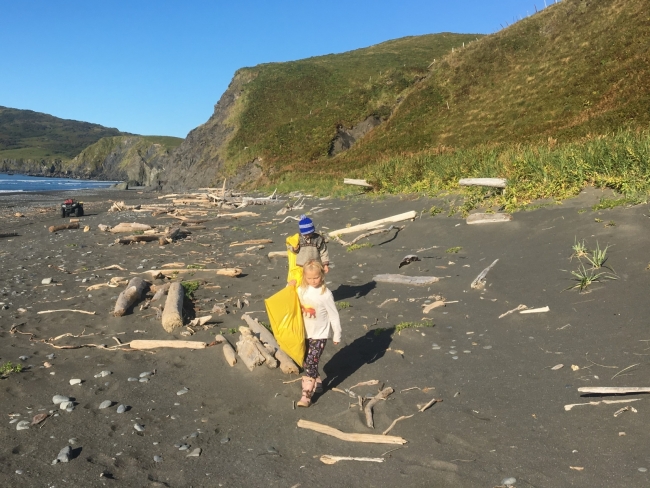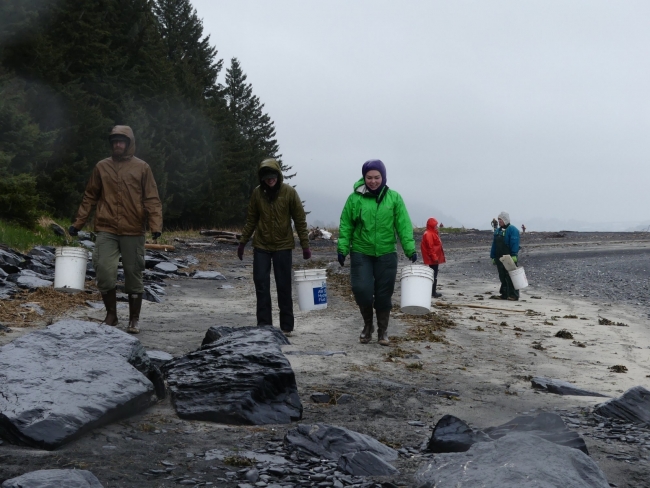The word “Alaska” may bring to mind images of snowy mountains, icy glaciers, dogsleds, snow-machines, isolated cabins, fishing boats, and amazing wildlife. While those are all things you can find in “The Great Land,” Alaska is also a place where marine debris is an especially impactful and challenging problem.
Alaska has over 44,000 miles of shoreline - that’s more than the rest of the United States combined, and enough to circle the earth nearly two times at the Equator. Accessing these extensive and rugged beaches can be difficult, even in the best of weather, but Alaskan weather is often less than cooperative. This means there is a short field season where work can be done - in some places just a few months long. The amount of debris is also a challenge. Ocean currents and winter storms combine to bring huge amounts of debris to Alaskan shores every year. Those shorelines are home to rich habitat and diverse wildlife – often with significant cultural and economic importance - that can be negatively impacted by the many different kinds of marine debris. From entanglement in nets and line, to ingestion of small plastics, each type of debris can pose a threat. Disposal can also be a challenge, with landfills often far away or even closed to marine debris based on capacity limitations.
Taking on these challenges requires innovation and determination, qualities Alaskans are rightfully known for, and qualities the Alaskan marine debris community has in abundance. From NGO’s and private citizens, through to Federal and State agencies, hardworking individuals and organizations across the state are taking on this problem.
In recent years, the Marine Debris Program (MDP) has funded projects across the state to help address the issue of marine debris. On the Kodiak Archipelago, Island Trails Network is working with volunteers from schools and organizations to remove debris from local shorelines, taking advantage of the road system to reach over 80 individual beaches. Volunteers are also building in monitoring, using the NOAA Marine Debris Monitoring and Assessment Project protocol to take measurements before, immediately following, and then several months after cleanup. This helps Island Trails Network better understand how much and what type of debris is arriving on shorelines over time.
On the Kenai Peninsula, the Center for Alaskan Coastal Studies is working with local schools and businesses to measure and reduce single-use items that can become debris while educating residents and visitors about the impacts of marine debris in the local community. Across the state, there are numerous other groups working to remove, prevent and research debris and its impacts – from Utqiagvik in the Arctic, to Prince of Wales Island just north of British Columbia.
The work done and the tools used may vary, but the goal is a common one – to assess, remove, and prevent debris. The NOAA MDP is proud to work as part of this community to address marine debris across Alaska.






I think on Alaska’s coast plastic waste is measured in tons, and much of that is derelict fishing gear and domestic waste from vessels. How to remove debris?
...And regarding technical innovation, one of promising options is a Japanese-designed plastic-to-fuel conversion system that produces a liter of fuel from a kilo of plastic by raising the temperature in a closed system to the point that the plastic vaporizes.
Sofia from https://www.thedebtsreliefreviews.com